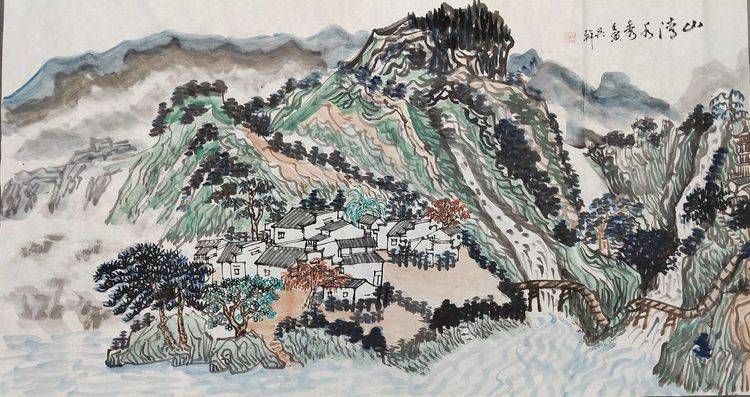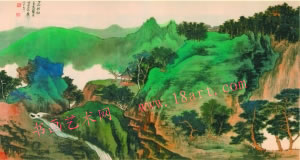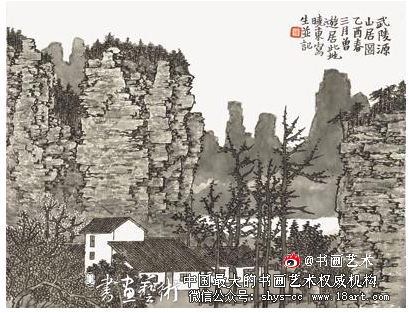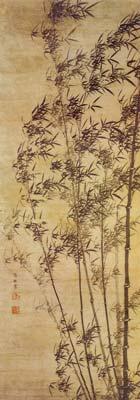源远流长的中国书画历史 传承中华艺术瑰宝的独特魅力
大家好,史国良画册「用脚步丈量」很多人还不知道,现在让我们一起来看看吧!
史国良是一位踏遍祖国边陲的画家。少数民族文化是他经久不衰的创作源泉。
他用画笔生动地勾勒出我国不同民族人物的独特魅力,用朴实的写实手法聚焦他们的美好生活。每一幅画作背后蕴含着他和作品人物感情的交融,也反映出他对少数民族文化的理解与表达。
图1:画家史国良在新疆采风/央视网
上世纪80年代,他做了一个坚定的决定,因对民族题材情有独钟,他启动了自己的边疆题材创作计划。从这一刻起,他对于祖国边陲文化探索的脚步就从未停歇。在过去30多年间,他的坚持不懈让他收获了一幅幅散发着浓郁民族气息,又有鲜明时代印记的精品力作。
他先后完成了《刻经》、《天山之舞》、《塔吉克人的婚礼》等一系列代表作品。其中西藏题材作品《刻经》荣获第二十三届蒙特卡罗国际现代艺术大奖赛“联合国教科文组织大奖”,史国良也因此受到文化部荣誉嘉奖。
2021年,史国良创作的《文成公主故乡土》被国家画院收藏。史国良将自己手捧文成公主家乡泥土的形象融入画作,以细腻笔触对民众纪念文成公主的场景进行了质朴的描绘。
图2:史国良作品《文成公主故乡土》/央视网
对他而言,他所有的创作就是以人文主义为基础。他曾说:“(我的)画作是以人文主义为主旋律,都是人跟自然、人跟生活、人跟人。”
他希望几百年以后,当人们再看到这张画讲解文成公主的故事,还依然能够“触摸”到绘画背后他所注入的情感。他说:“当大家想去看看文成公主,(想)跟她(文成公主)对话,一定有另外一种感情,我很希望把人代入到那样的一种时空里去。”
与创作主体构筑情感,与画中人物交心、交朋友已成为史国良创作的一部分。
2019年,史国良在塔什库尔干塔吉克自治县采风时,赶上塔吉克族青年兹穆尼赫举行盛大的民族婚礼,这对新人人生中最甜蜜的时刻被史国良记录下来,成为一份最珍贵的祝福。因画结缘,从此史国良和兹穆尼赫结成了忘年交。三年后的金秋时节,他重启新疆之旅,专程回来探望老朋友。
这些年,兹穆尼赫的生活发生了喜人的变化,妻子考上了公务员,他的工作坊越做越红火。2020年全家搬进了当地政府免费盖的新房,又添了一个可爱的女儿。
图3:画家史国良在新疆采风/央视网
史国良在回忆这趟旅程时说:“这次来我觉得有一种探亲的感觉,因为那次来是偶遇,这次来是探亲。我每次深入到一个地方的时候,都会交很多朋友,有很多朋友就是到现在还在来往,就几十年过去大家还记得,有时候他们到北京来的时候还来看我,我觉得那种感情建立是非常真诚的,非常淳朴的。”
新疆的采风行程结束了,史国良的写生本里一张张鲜活生动的面孔让他忘却疲惫和辛劳。回到北京的当天,放下行囊,史国良一头扎进画室。
图4:画家史国良专心作画/央视网
他觉得速写本实际上就是画家深入生活的“心电图”。他解释道:“因为在现实生活中有时候你会激动,激动得手忙脚乱的,非常慌张,心跳加快,那么赶快模模糊糊就画下来,就是心理状态的一种反应,所以我管它叫心电图。我希望更多的观众在看到我的作品的时候,也看到了我们各个不同的民族像个大家庭一样,像石榴籽一样紧紧抱在一起,是一个特别完美的大家庭。我希望你们看了我的画,能分享到这里面的幸福。”
凭借扎实的艺术功底、勤奋的创作状态,史国良用笔墨画卷书写自己对生活的赞美、对人民的讴歌、对时代的记录。他说每一次采风都是一次心灵洗礼,每次创作都是一次笔力升级,唯有这样才能不负鎏金的岁月、火热的生活和可爱的人民。
To showcase the alluring charm, mystery, and culture of China's ethnic minorities, contemporary painter Shi Guoliang has devoted himself to exploring the distinctive lifestyles of these various groups that are scattered across China, and rendering them vividly on canvas.
Capturing scenes from their daily life with a photorealistic painting technique, the 66-year-old has created many well-known figure paintings highlighting their rich culture, such as "Golden Autumn," "Dance of the Tianshan," and "Picking Potatoes."
In the 1980s, Shi set out to create a series of paintings focusing on China's borderlands, where these minority groups served as an endless flow of inspiration. He then followed through on this for over 30 years, imprinting his "creative footsteps" along much of the nation's border regions as he obsessed with his work. Meanwhile, his special fondness for the local people and their unique culture and customs has allowed him to harvest numerous masterpieces steeped in the ethnic flavor of the time.
His work "Engraved Classics" won the "UNESCO Grand Prix" award at the 23rd International Contemporary Art Competition in Monte Carlo, which netted Shi even more accolades from China's Ministry of Culture.
In 2021, his representative work, "The Hometown of Princess Wencheng", was added to the permanent collection of the Beijing-based National Academy of Painting. The painting took five years, and countless trips to Tibet, to produce.
It depicts a group of Tibetan people gathering together to commemorate Princess Wencheng, one of the most famous and beloved queens in their history. She traveled all the way from Chang'an (today's Xi'an in Shaanxi) to marry the legendary King Songtsen Gampo over 1,300 years ago, thus bringing the culture of the Han people to this southwestern Chinese region.
In the painting, Shi Guoliang incorporates an image of himself holding some soil from the princess's hometown and relies on delicate brushstrokes to portray the scene of Tibetan people commemorating the royal figure with a masterful sense of emotion.
Shi believes his paintings should be based on humanism. “Humanism is the main melody and the paintings are all about the relationships between people and nature, people and life, and people and people," he said. "I think in a few hundred years, people will still feel the same way when they look at this painting about the story of Princess Wencheng.”
Establishing an emotional connection with his subjects, opening his heart to them and forging close friendships have become an essential part of Shi Guoliang's creative process.
This autumn, he embarked on a trip to Xinjiang, where the customs, culture and heroic traditions of the Tajik ethnic group have been elegantly captured in his works. Shi said he has visited this northwest region in China countless times to get a true feel for its people and their way of life.
However, this time he made a special trip to visit some old friends, a couple living in the Taxkorgan Tajik Autonomous County. Back in 2019, Shi was fortunate enough to witness the wedding ceremony of a Tajik couple, which he duly painted. While recording on canvas one of the happiest moments of their life, he struck up a firm friendship with the bride and groom, despite the big age gap between the artist and his subjects. Over the past three years, the family has added a new member, a baby daughter, and Shi has watched them grow and their living conditions improve.
Shi said revisiting them feels akin to going home to meet his own relatives. "Every time I go to a new place, I make a lot of friends, many of whom are still in contact with me to this day. I think the kind of emotional connections are very natural and sincere,” he said.
At the end of his 15-day journey in Xinjiang, Shi Guoliang's sketch book was filled with vivid faces that made him forget his tiredness. He rushed into his studio the day he returned to Beijing.
Shi said, "I hope that when people see my works, they can also see that our different ethnic groups are like a big family, holding each other tightly like pomegranate seeds. I hope you can share the happiness within when you see my paintings."
Shi Guoliang's works record the times and express his praise of life. He believes only by continuing to create can he live up to the golden times and wonderful people.










